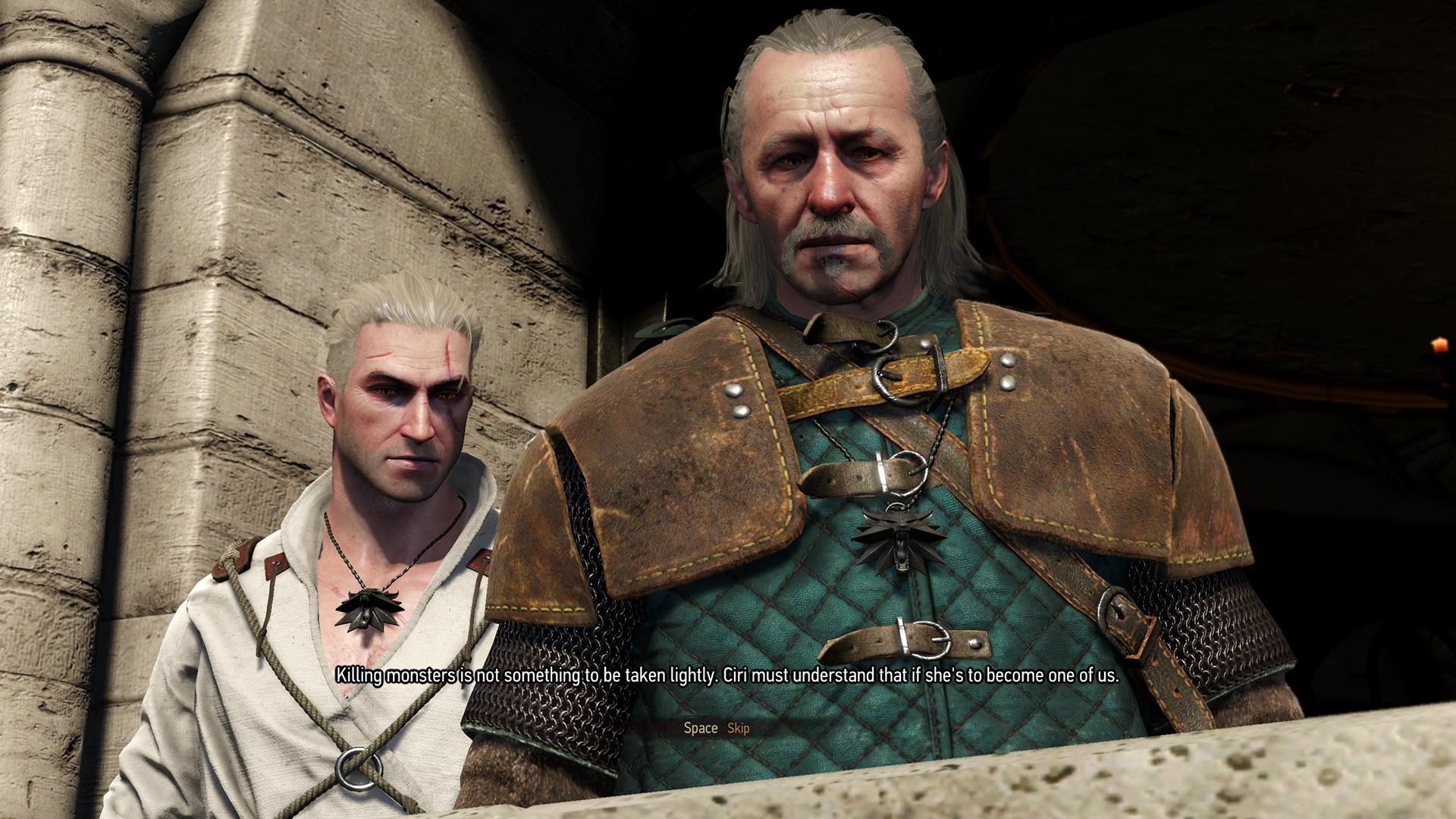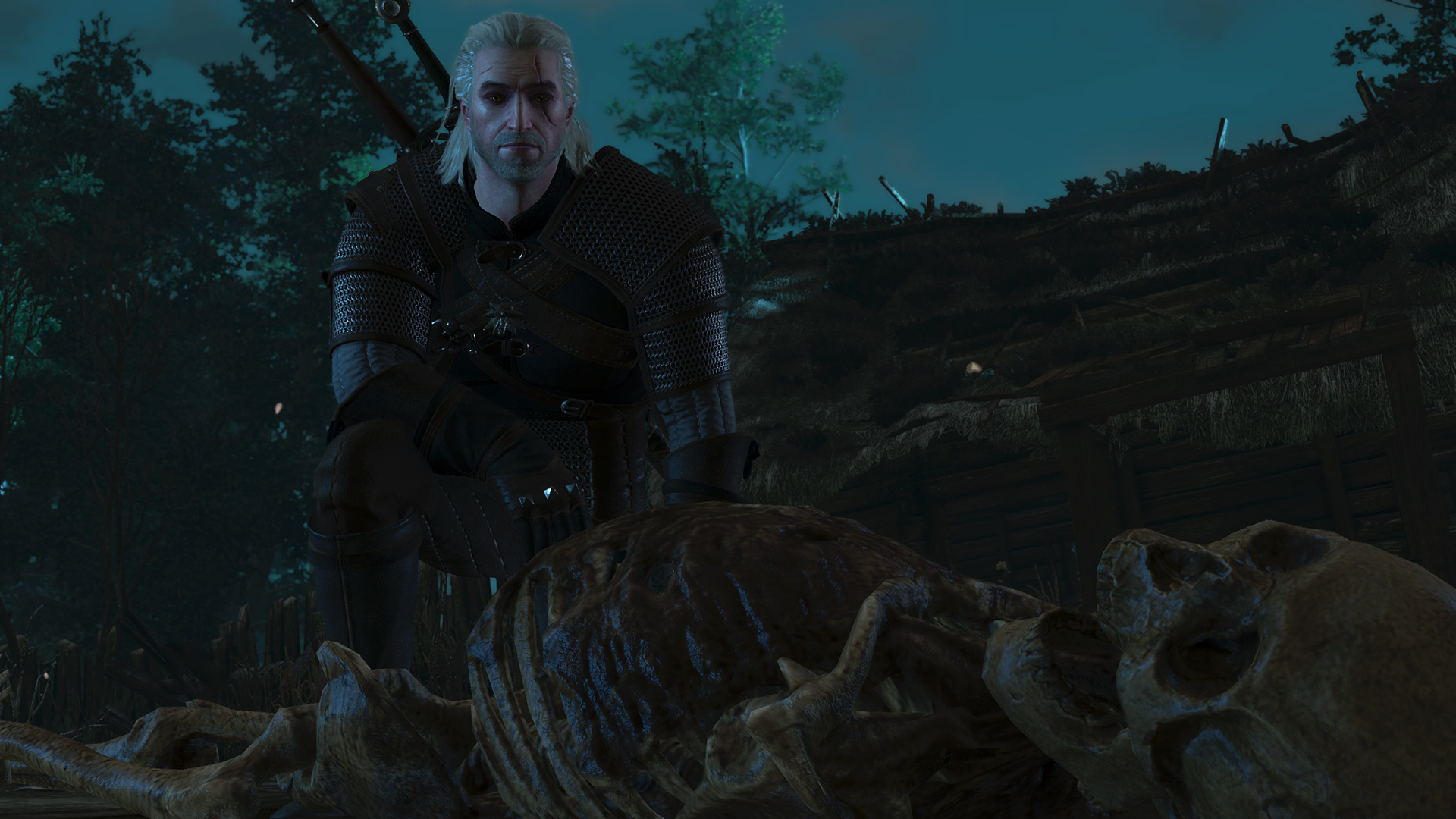Durante's Witcher 3 analysis: the alchemy of smoothness

A qualitative approach to graphics settings
While it is nice to know exactly how many frames per second you lose on a given GPU by enabling one specific setting, this type of quantitative information has been gathered in great detail elsewhere. Instead, I’ll try to provide some general guidelines on which settings might be worth reducing if you are unsatisfied with the game’s performance on your hardware.
Let’s start with the big ones. Each of these settings has a significant performance impact, and reducing them will make a difference for your frametimes.
— HairWorks does not, in my opinion, justify its performance impact in this game on all but the highest-end setups. While I absolutely love the effect, especially on monsters, and greatly appreciate it being there for future playthroughs on superior hardware, if you need more performance it should probably be among the first to go. This remains true even in after the most recent patch (1.03 as of the time of this writing), though it did improve Hairworks performance.
— Conversely, HBAO+ is a very significant improvement over SSAO at not too high a cost, and having no AO at all greatly diminishes the graphics of the game. I’d suggest keeping HBAO+ enabled if at all possible.
— Foliage visibility range has both a high graphical and a very high performance impact. Reducing it to high or even medium can make for a nice performance improvement while reducing the lushness of distant terrain somewhat. It should be among your first choices if you need to make some cutbacks.
While not quite as important as the above, there’s a whole slew of what I’d call mid-tier settings which might just make the difference between a solid 60 (or 30) FPS and occasional frame drops:
— The game’s built-in anti-aliasing is more effective than usual postprocessing methods, but not by too much, and it is also not as cheap. You might reclaim some performance by disabling it and injecting e.g. SMAA externally.
Keep up to date with the most important stories and the best deals, as picked by the PC Gamer team.
— Grass density is similar to foliage visibility range, though with a smaller impact on both performance and fidelity. It should be among the first settings you reduce.
— Texture quality is really more dependent on your GPU’s memory than performance as such. If you have more than 2 GB of video memory, keep it at ultra, otherwise do drop down to high.
— Shadow Quality does have a performance impact, and it offers a rather smooth progression of quality from the highest to the lowest setting. It is a good candidate for reduction if you need the performance.
Finally, the settings not mentioned so far either seem to have no performance impact in the current build of the game, or it is so minuscule that I would consider the choice more aesthetic than performance-driven. Personally, I dislike chromatic aberration and vignetting, so I appreciate that the ability to disable them individually is offered.
Further Tweaking
If you have a very powerful system which still offers performance to spare even at maximum settings, there are some options even at this early stage to improve graphics further. One of these is tweaking configuration settings above what is possible using the in-game settings.
The configuration file can be found in “%USERPROFILE%\Documents\The Witcher 3\user.settings“ and primarily allows for increasing foliage distance and improving shadow quality. The former has a massive impact on performance as might be expected, but the latter can result in notable improvements at moderate performance costs, and might be worth looking into if you have a high-end system. Particulars regarding this process and a guideline as to its visual and performance impact are provided in this article.
CD Projekt RED have also committed to further supporting .ini tweaking in the future, so perhaps we can look forward to, for example, LoD distance settings for non-foliage objects in the future. Similarly, they are planning to provide modding tools for the game, which should allow motivated fans to improve on any blemishes discovered—be they low-res or repeating textures or low-detail geometry—anywhere in The WItcher 3’s vast world.

Wrapping up
Before coming to a close, there are a few remarks I’d like to make concerning various technical aspects of The Witcher 3 which don’t really fit into any of the other sections.
— First of all, CD Projekt should be commended for not wasting anyone’s time. The game boots up and shuts down in seconds, with no unskippable splash screens (or worse, movies) in sight. This might seem like a trivial point, but too many games get it hideously wrong.
— Similarly, the game’s loading seems highly optimized considering its genre and graphical quality. And that’s despite entering and exiting buildings not requiring any separate loading at all.
— Another small but very convenient feature is the ability to switch resolutions and all settings on the fly within the game, again with minimal pauses and delays.
On the other side of the coin I don’t have much to complain about. One relatively minor gripe is that there is no built-in way to completely hide or restore the UI with a hotkey, or to take HUDless screenshots. This is a convenience feature which will make people more likely to provide good free marketing for your game, so I’d expect everyone to start including it.
A topic that has come up quite a bit are game crashes. I’ve luckily not experienced these first hand, but out of curiosity I tried a very minor overclock on my GPU, one which works without issues in other titles. With just 50 Mhz above the default of my (stock overclocked) 970 I had a driver crash after less than 15 minutes in the game. While it’s unlikely to be the solution to all problems, it does appear that The Witcher 3 is very sensitive to system stability, so if you are overclocking do try to see if it might be the cause of any stability problems you encounter.
Conclusion
The Witcher 3 is a huge game, and just like I have only scratched its surface in terms of gameplay, I am sure that the same is true of tweaking its performance. Some GPU vendors have yet to release drivers for it, others’ are suffering from stability problems, and if history is any indication then the developers will do a great job of supporting and improving the game over the coming years. And that’s not even getting into the possibilities of the modding tools which CD Projekt RED have pledged to release later on.
However, in the here and now, Witcher 3 is already a technically solid game considering its genre and ambition. Its CPU requirements are very reasonable, and its graphical options offer enough range to make owners of both high-end and more modest systems happy. Some tinkering might be needed to get the smoothest performance, but when has that ever stopped us?

